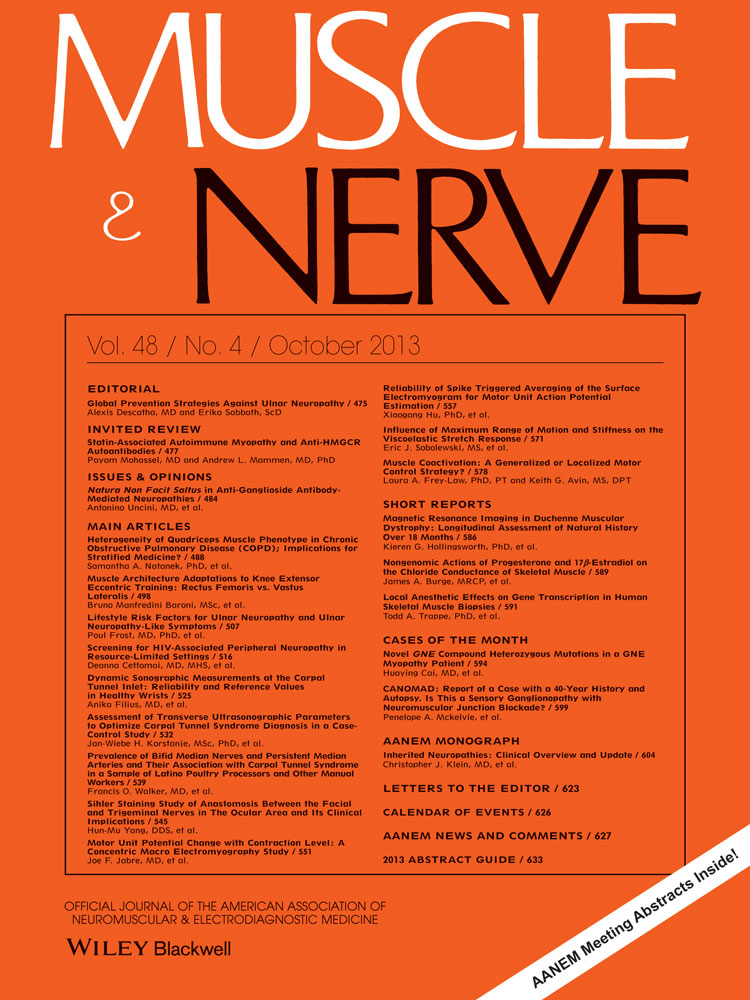Prevalence of bifid median nerves and persistent median arteries and their association with carpal tunnel syndrome in a sample of latino poultry processors and other manual workers
This study was supported by the National Institute for Occupational Safety and Health (R01 OH9251).
ABSTRACT
Introduction
The prevalence of bifid median nerves and persistent median arteries, their co-occurrence, and their relationship to carpal tunnel syndrome (CTS) are only understood partially.
Methods
We screened 1026 wrists of 513 Latino manual laborers in North Carolina for bifid median nerves and persistent median arteries using electrodiagnosis and ultrasound.
Results
A total of 8.6% of wrists had a bifid median nerve, and 3.7% of wrists had a persistent median artery independent of subgroup ethnicity, age, gender, or type of work. An association with definite carpal tunnel syndrome was not found. The presence of either anatomic variant was associated with a high likelihood of co-occurrence of another variant in the same or the contralateral wrist.
Conclusions
The occurrence of median anatomic variants can be determined in field studies using ultrasound. Persistent median arteries and bifid median nerves tend to co-occur but do not put manual laborers at additional risk of developing CTS. Muscle Nerve 48: 539–544, 2013




